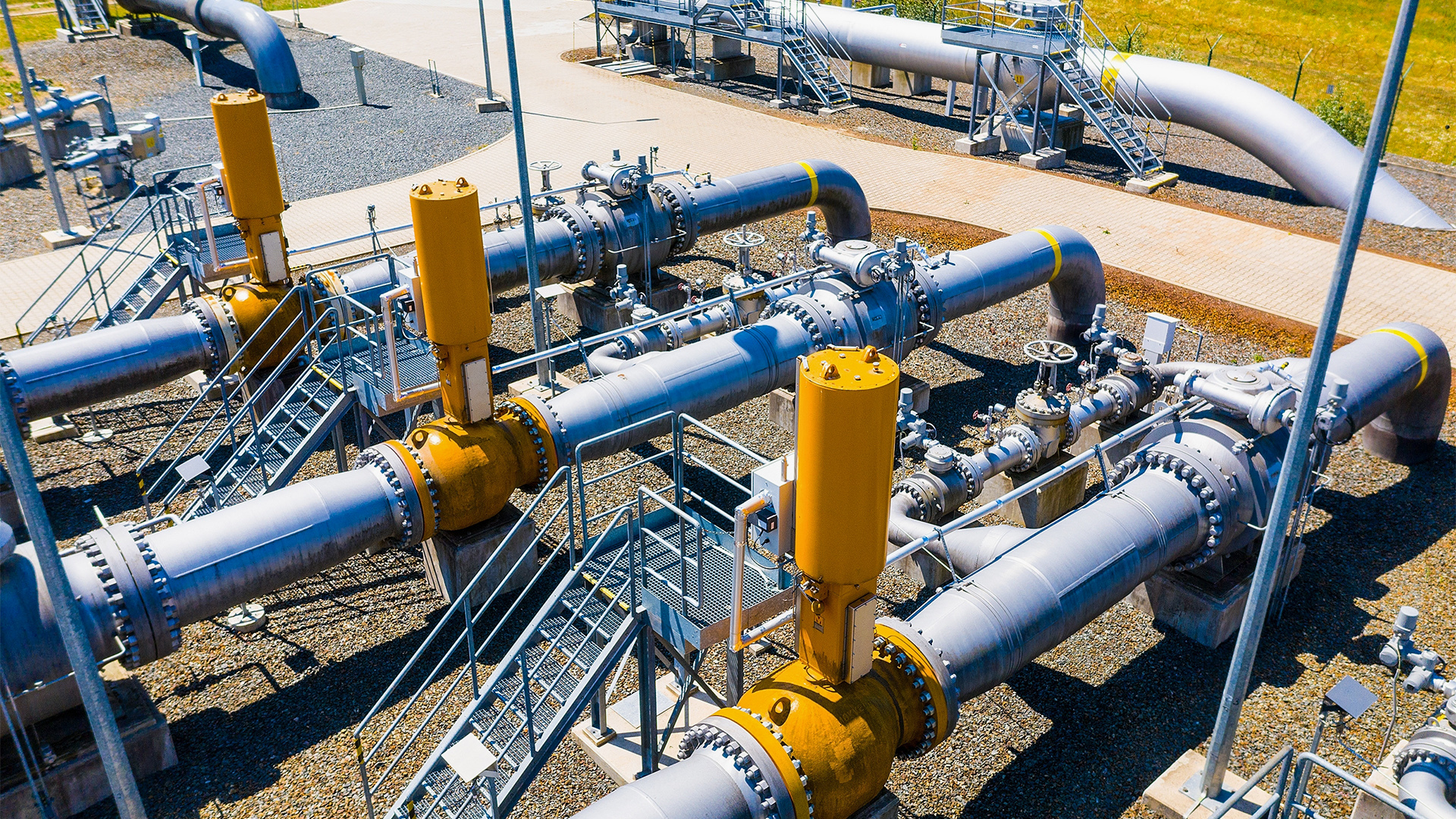Russia reduced flows through the Nord Stream 1 pipeline, which brings Russian gas to Germany, to 40% in June and 20% in July.
It has also cut supplies to several European countries such as Bulgaria, Denmark, Finland, the Netherlands and Poland, and has reduced flows through other pipelines since the start of its war on Ukraine. What are the alternatives available to Europe if Russian gas supplies are cut off?
Typically, Russia supplies Europe with about 40% of its gas, mostly via pipelines.
Last year, supplies amounted to about 155 billion cubic meters, and Russian gas reaches Austria, Italy, Slovakia and other countries in Eastern Europe via Ukraine.
Ukraine shut down the Sukhranovka pipeline, which runs through Russian-held territory in the east, prompting European countries to search for alternative supplies, including some Russian gas that Moscow stopped pumping after its demand to pay the price in rubles was rejected.
And the Russian company, Gazprom, announced, on Friday, that the “Nord Stream 1” line, which transports Russian gas to Germany, will be subject to further maintenance work, a day before it is due to resume natural gas flows from this line, which deepens European difficulties in obtaining Russian gas before The beginning of winter.
The Kremlin blamed Western sanctions for the delay in the return of equipment for the line sent to Canada for maintenance.
Alternatives and options:
Yamal-Europe pipeline
The Yamal-Europe line passes through Belarus (Belarus) and Poland to Germany and has a capacity of 33 billion cubic meters, or about a sixth of Russian natural gas exports to Europe. Since the beginning of this year, the flows have been reversed to be to the east between Germany and Poland, but Moscow imposed sanctions on Malik. The Polish part of the pipeline, however, said Poland's climate minister could use the pipeline without reversing the gas flow.
Sharing supplies across a connected European gas network
Some countries have alternative supply options and an interconnected European gas network so that supplies can be shared. Norway, Europe's second largest gas supplier after Russia, for example, is ramping up production to help the European Union achieve its goal of ending dependence on Russian fossil fuels by 2027.
Britain's Centrica has struck a deal with Norway's Equinor to increase supplies for the next three winters.
Britain is not dependent on Russian gas and can also export to Europe via pipelines.
A new pipeline allowing the flow of up to 10 billion cubic meters of gas annually between Poland and Norway will open in October.
Germany may import gas from Britain, Denmark, Norway and the Netherlands via pipelines.
The Dutch energy minister said that the Dutch Groningen field could be used to help neighboring countries in the event of a complete cut off from Russian supplies, but that the increase in production could cause earthquakes.
Southern Europe can also receive Azerbaijani gas via the Trans-Adriatic pipeline to Italy and the natural gas pipeline through Turkey.
LNG terminals in Europe have limited capacity to supply additional volumes, although some countries say they are looking at ways to increase imports and storage.
Germany is among the countries that want to build new LNG terminals and plans to build two in just two years.
Poland, which depends on Russia for about 50 percent of its gas consumption, or about 10 billion cubic metres, has said it can get gas via two links with Germany.
A new gas link between Poland and Slovakia was also put into operation last week, and Spain wants to revive a project to build a third gas pipeline through the Pyrenees.
American gas
The United States said it could supply 15 billion cubic meters of liquefied natural gas to the European Union this year.
But US LNG plants are producing at full capacity, and an explosion at the main Texas LNG export terminal will keep it idle until late November.
alternative sources of energy
Some countries can seek to bridge the gap in energy supply by resorting to electricity imports via conductors from their neighbors or by enhancing the capacity to generate electricity from nuclear power, renewable energy, hydropower or coal.
And the available volume of nuclear energy is declining in Belgium, Britain, France and Germany, with plants in these countries exposed to interruptions as they become obsolete, stop operating or go out of service.
Water levels have receded this summer due to a lack of rain and a heat wave.
Europe has been trying to move away from using coal to meet climate targets, but some factories have been restarting since mid-2021 due to rising gas prices.
Germany launched the second phase of its three-phase emergency plan, urging companies and consumers to save gas to avoid forced rationing.

